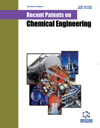-
oa Editorial [Hot Topic: Ion Exchange Membrane, An “Age-Old” but “Emerging” Technology (Guest Editor: Tongwen Xu)]
- Source: Recent Patents on Chemical Engineering, Volume 4, Issue 2, Aug 2011, p. 79 - 80
-
- 01 Aug 2011
Abstract
Traditionally, ion exchange membranes (IEMs) are classified into anion exchange membranes (AEMs) and cation exchange membranes (CEMs) depending on the type of ionic groups attached to the membrane matrix. CEMs contains negatively charged groups such as -SO3-, -COO-, -PO32-, -PO3H-, - C6H4O-, etc., fixed to the membrane backbone and allow the passage of cations but reject anions; while AEMs contain positively charged groups such as -NH3+, -NRH2+, -NR2H+, -NR3+,-PR3+ , -SR2+, etc., fixed to the membrane backbone and allow the passage of anions but reject cations. The development of IEM-based process began in 1890 with the work of Ostwald who studied the properties of semipermeable membranes and discovered that a membrane can be impermeable for any electrolyte if it is impermeable either for its cation or its anion. Around 1940, interest in industrial applications led to the development of synthetic ion exchange membrane on the basis of phenol-formaldehyde-poly-condensation. Simultaneously, Meyer and strauss proposed an electrodialysis process in which AEMs and CEMs were arranged in alternating series to form many parallel solution compartments between two electrodes. Especially, with the development of stable, highly selective ion-exchange membrane of low electric resistance in 1950 by Juda and McRae of Ionics Inc., electrodialysis based on IEMs rapidly became an industrial process for demineralizing and concentrating electrolyte solutions. Since then, both IEMs and electrodialysis have been greatly improved and widely used in many fields. For example, in 1960s, first salt production from sea water was realized by Asahi Co. with monovalent ion permselective membranes in 1969, the invention of electrodiaylsis reversal (EDR) realized long-term run without salt precipitation or deposition on both membranes and electrodes in 1970s, a chemically stable cation exchange membrane based on sulfonated polytetra-fluorethylene was firstly developed by Dupont as Nafion® leading to a large scale use of this membrane in the chloralkali production industry and energy storage or conversion system (fuel cell). Simultaneously, a composition of cation exchange layer and an anion exchange layer into a bipolar membrane in 1976 by Chlanda et al. bring many novelties in electrodialysis applications today. Also, stimulated by the increasing demand in applications, many new types of IEMs were invented for the request with better selectivity, lower electrical resistance and improved thermal, chemical and mechanical properties. As an example, inorganic-organic ion exchange membranes were developed in the late 1990s by sol-gel for applications in severe conditions such as higher temperature and strongly oxidizing circumstances. IEMs is an “age-old” technology because it appeared more than 120 years ago; it is also an “emerging” technology with significant technical and commercial impact, because today IEMs and the related processes are receiving considerable attention and are successfully applied for desalination of sea and brackish water and for treating industrial effluents. They are efficient tools for the concentration or separation of food and pharmaceutical products containing ionic species and the manufacture of basic chemical products. The evolvement of IEMs not only makes the process cleaner and more energy-efficient but also recovers useful effluents that are now going to waste and thus makes the development of society sustainable. This may be the reason why more and more informative reviews including all the IEMs synthesis, IEMs applications, electro-catalytic membrane reactors, fuel cells based on IEMs, or bipolar membrane process and applications in environmental protection and in food industry have been published in the recent years. However, these reviews have been mainly based on the published journal papers. To understand the present patent states of ion-exchange membrane research, this special issue gives a summary of what has been accomplished in IEMs and the related processes from the point of view issued or applied patents. The issue contains ten papers so far, contributed by the selected researchers and professors in the corresponding fields. Paper 1 gives a substantial patent review on hybrid ion exchange membranes, which combine the advantages of inorganic and organic membranes and were recently developed and expected to be applied in harsh conditions, such as high temperature and strongly oxidizing circumstances. Paper 2 describes the patent status of ion exchange membranes and cation exchange membranes as protons or hydroxyl ions conductor for applications in fuel cells, respectively. Recently, sea water desalination has received much attention due to the comparatively low cost. But the limitation is due to the discarding of the concentrated effluents. The question arises how to simultaneously obtain both salts and pure water from the sea water? electrodialysis has been considered to be a promising tool. For this, ion exchange membranes with monovalent selectivity plays the role. So, paper 4 discusses such topic from the patent. Papers 5-9, respectively concentrate on the ion exchange membrane applications from both the processes such as elctrodialysis, electrodeionization (EDI), electrodialysis with bipolar membranes, adsorption and pervaporation and the fields such as chemical and environmental engineering, Agri-Food Sectors, etc. Another distinctive characteristic about ion exchange membrane technologies is integration flexibility, which is crucial to the realization of multiple functions needed for a specific complex industrial application. The last paper deals with such technique integrations and present the recent progress on electromembrane based integrations for industrial separations based on patents as well as some published articles. All the papers published in this special issue are invited ones. I appreciate the cooperation and active participation from all the authors, who, despite their extremely busy schedule of teaching and research (and even administration), found time to make this special issue a reality.


